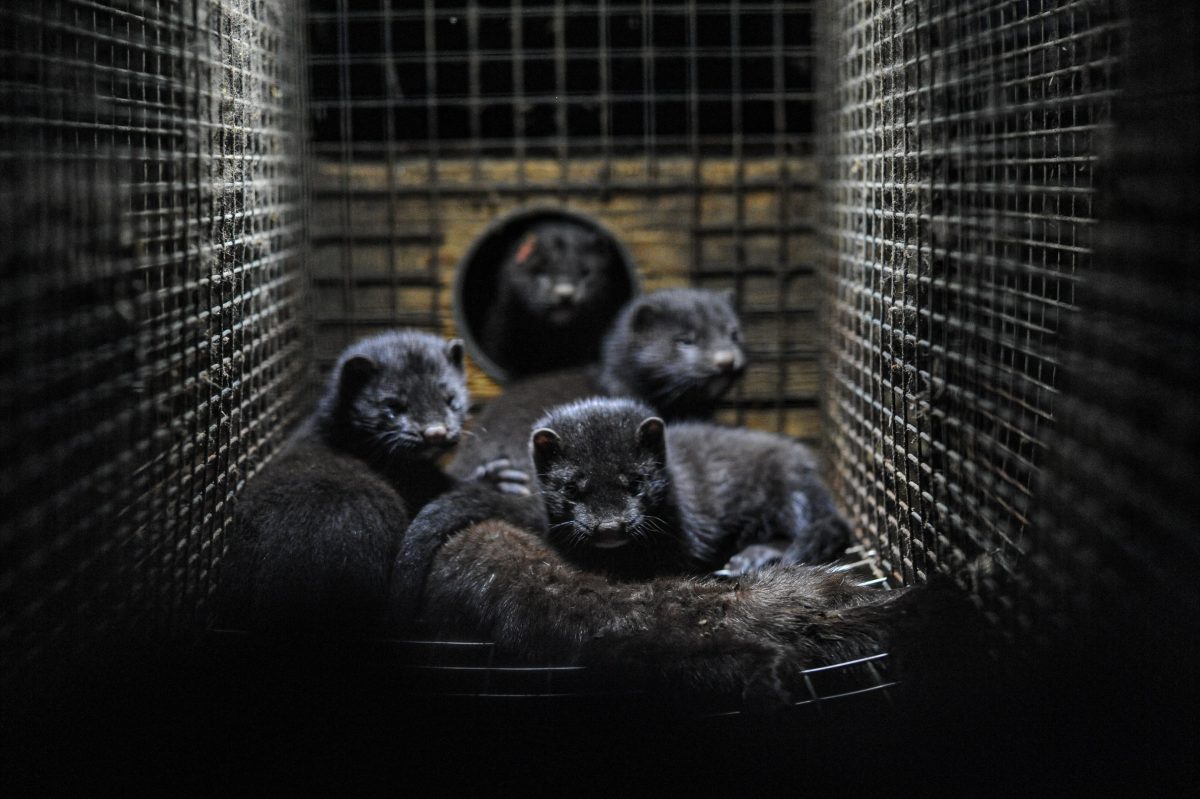COVID-19, people, and other animals
The ‘One Health’ approach in light of COVID-19
The ongoing pandemic has put a spotlight on the interface between the health of humans, animals, and the environment. COVID-19 is a zoonosis: a disease that is naturally transmissible from animals to humans. A recent publication by the UN Environment Programme and the International Livestock Research Institute (UNEP report) identifies the One Health approach as the ‘most promising way to manage and prevent zoonoses’ such as COVID-19 and calls for ‘coordinated interdisciplinary responses across human, animal and environmental health.’
One Health is not new to the international arena: in 2010 the Food and Agriculture Organization of the United Nations (FAO), the World Organization for Animal Health and the World Health Organization (WHO) started a tripartite collaboration with the purpose of addressing health threats at ‘human-animal-ecosystem interfaces.’ Since COVID-19 emerged, a plethora of policy documents on One Health have been produced. Against this backdrop, it is certainly opportune to think about the future role of One Health within the legal discipline: existing legal instruments provide room for One Health considerations. Yet, this post argues, a properly normative reflection is missing from the current legal catalogue.
The WHO defines One Health as ‘an approach to designing and implementing programmes, policies, legislation and research in which multiple sectors communicate and work together to achieve better public health outcomes.’ One Health is based on the idea that in order to respond to health challenges in an increasingly interconnected and continuously changing world, we must take into account the interface between humans, non-human animals and the environment.
One Health has built momentum in light of the COVID-19 pandemic – and beyond. In addition to COVID-19, the recent UNEP report puts a spotlight on other diseases with animal involvement in transmission. It is estimated that 60 per cent of human infections have an animal origin, and approximately 75 per cent of all new and emerging diseases can be transmitted from animals to humans (UNEP report, at 11). The majority of animals involved in zoonotic events in the past were domesticated animals, as they have high contact rates to humans. The report touches not only upon other zoonoses that received global attention such as the highly pathogenic avian influenza (HPAI, the so-called bird flu) dating back to 1996, Middle East respiratory syndrome (MERS) which emerged in 2012, and the severe acute respiratory syndrome (SARS), first reported in 2003, to name just a few. The report also mentions indirect zoonoses, e.g. yellow fever and Zika virus disease, and endemic or so-called ‘neglected zoonoses’ that continuously exist in affected populations and receive comparatively little attention, such as e.g. anthrax, bovine tuberculosis, rabies and trypanosomiasis (sleeping sickness) (UNEP report, at 11, 12).
Still, many other issues relevant to One Health fall outside of the scope of the recent UNEP report. According to the FAO, antimicrobial resistance (AMR) is perhaps the most pressing One Health issue, with a death toll of about 700,000 annual human deaths now, and an expected over 10 million annually by 2050 (FAO brief at 6). AMR refers to microbes (usually bacteria) that have become resistant to antimicrobial drugs, such as antibiotics. It is being exacerbated by abuse and overuse of antimicrobial drugs in the livestock sector. The resistant microbes can move from livestock to humans through direct exposure, the environment and the food chain. Further, in the context of the CBD, biodiversity loss is considered relevant to human health and thus a One Health issue. Thinking about One Health beyond COVID-19 is vitally important for re-assessing how the health of non-human animals and humans are interrelated. This goes beyond ‘wet markets’ and the consumption of wild animals. The concern also extends to industrial farming of chickens, pigs, and cows.
Animals do not threaten us; rather, our entrenched relationship to animals is a threat to ourselves. Pandemics such as COVID-19 are ‘a predictable and predicted outcome of how people source and grow food, trade and consume animals, and alter environments’ (UNEP report, at 7). The recent UNEP report lists the main anthropocentric drivers of zoonotic disease emergence: ‘increasing demand for animal protein, unsustainable agricultural intensification, increased use and exploitation of wildlife, unsustainable utilization of natural resources accelerated by urbanization, land use change and extractive industries, travel and transportation, changes in food supply chains; and climate change’ (UNEP report, at 7).
International coordination is vital in addressing each of these problems, including under the umbrella of One Health. Yet the ten key recommendations in the UNEP report refrain from naming concrete measures, legal instruments, or relevant actors. Instead, guidance on how the One Health approach can play into international law can be found in other recent publications. An FAO brief published in July 2020 identifies some of the areas of law linked to the food and agriculture sector that are relevant to One Health. Sanitary and phytosanitary measures play a vital role. One example is the Agreement on the Application of Sanitary and Phytosanitary Measures of the World Trade Organization. Its purpose is to ensure food safety without distorting trade. Environmental protection legislation is identified as another pillar of One Health in law. The FAO report names the environmental impact assessment as ‘a mechanism which contributes to the prevention of economic degradation and zoonotic diseases’ (FAO brief, at 4). Moreover, the brief calls for mainstreaming conservation and biodiversity into food and agriculture legislation (FAO brief, at 5). It also highlights the role of legislation on forest, wildlife and fisheries conservation and management (FAO brief, at 5, 6). Finally, it addresses the pressing need for antimicrobial resistance (AMR) legislation, countering the ‘abuse, overuse, misuse and release into the environment of AMs and resistant bacteria’ (FAO brief, at 6, 7). The powers and mechanisms suited to address AMR are typically found inter alia in legislation pertaining to health (human and animal), the environment, and legislation on the management of water, waste and pesticides (FAO brief, at 7). The UN Framework for the Immediate Socio-economic Response to COVID-19, published in April 2020 emphasizes the role of the Convention on International Trade in Endangered Species of Wild Flora and Fauna, the Convention on Migratory Species and the Convention on Biological Diversity (at 28).
One Health should be considered in applying existing instruments, in particular in the design of new responses to the problems identified in the recent UNEP report. Doing so poses new challenges to lawyers and policymakers: to implement the One Health approach, we need to better understand the interface between humans, animals and the environment. This requires interdisciplinary research and cross-sectoral collaboration.
However, efforts to seize the moment created by COVID-19 to advocate for a One Health approach in law should be sensitive to criticism. For instance, the UNEP report notes that environmental considerations are lacking in existing One Health research. Moreover, we should keep in mind the ‘anthropocentric character’ and the ‘peculiar contradictions at the heart of One Health: a movement trying to bring together human and animal health does so by arguing […] that attending to animal health will benefit humans’ (Cassidy, 2018, at 226). There is a resistance within One Health against taking animals seriously and considering their interests as good for themselves, rather than something worth pursuing for the benefit of humans. The anthropocentric nature of One Health might increase support and speed up the introduction of measures – however, it may do so at the cost of lasting synergies with environmental and animal protection issues.
Van Herten et al. submit that One Health is currently lacking a ‘corresponding ethical framework’ (Van Herten, Bovenkerk and Verweij, 2018, at 27). It remains a ‘boundary object,’ ‘multi-interpretable’ and ambiguous (Van Herten, Bovenkerk and Verweij, at 27 with further references). In other words, while enabling cross-disciplinary and cross-sectoral collaboration, One Health may hamper the elaboration of ethically sound and practically effective policies. The lack of normative considerations is salient in the aforementioned key recommendations of the UNEP report. There is no way around it: without taking a stance on the very moral status of animals and the environment, it will be difficult for One Health policies to be persuasive and effective. If existing public health policies are simply re-labeled as One Health, no one will benefit from it in the long term, whether animals, the environment or us.
Although certainly progressive in its recognition of human induced threats to health, the recent UNEP report falls short of providing the guidance on ethical questions that is needed to implement One Health and prevent future pandemics. It remains to be seen whether an increased focus on One Health enhances the legal protection awarded to animals and the environment, or whether these interests will be sidelined. With One Health identified as a promising future strategy, there is an urgent need to further develop its normative dimension. Only then it can inform concrete legal and policy decisions, e.g. about the regulation of the food industry in the context of AMR or the so-called culling of animals. The latter is very topical right now: just last week, the Danish government decided the culling of the countries entire mink population to prevent the spread of a mutated form of COVID-19. News websites report that the government has now backtracked on the mandatory culling, as there was no legal basis for the respective order. Nevertheless, the discussion is going to continue.

Katharina Braun is a PhD candidate at Freie Universität Berlin. She is writing her dissertation on the nexus between democracy, the human right to freedom of expression, and animal law. Katharina is interested in interdisciplinary approaches to law and legal theory.
